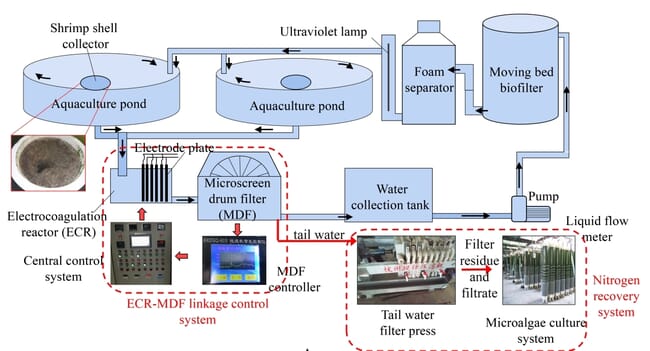
© IOCAS
A research team led by Prof Sun Jianming from the Institute of Oceanology of the Chinese Academy of Sciences (IOCAS) studied the utilisation, migration, transformation, and accumulation of input nitrogen in a whiteleg shrimp (Litopenaeus vannamei) recirculating aquaculture system (RAS).
The study, which was published in Journal of Water Process Engineering on 26 October, used a water treatment technology called electrocoagulation to improve the performance of the L. vannamei RAS.
Moreover, they used a Chlorella vulgaris culture system to recycle the waste nitrogen produced during aquaculture of L. vannamei, and the nitrogen recovery rate was more than 80 percent. Using microalgae to recover nitrogen from aquaculture effluent not only improved resource utilisation, but also protected the environment.
"We systematically studied the migration and transformation law of nitrogen in RAS, and formulated a recovery strategy for waste nitrogen, which is of great significance for the green and healthy development of the aquaculture industry," said Xu Jianping, lead author of the study, in a press release.
"The results comprehensively explained the flow characteristics of nitrogen in large-scale RAS, and provided a data support for comprehensive understanding of RAS and targeted improvement of water treatment equipment," added Prof Sun, the corresponding author of the study.
The work was supported by the National Key Research and Development Program of China.




